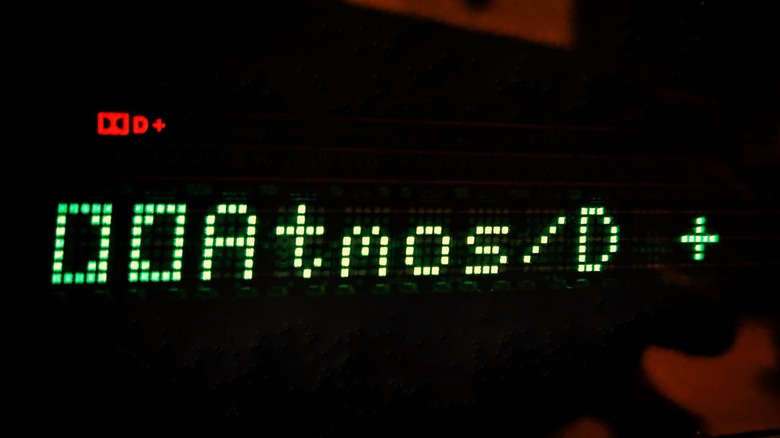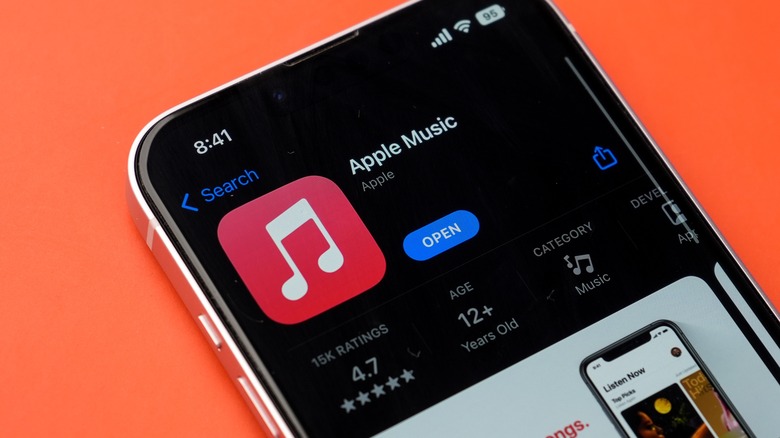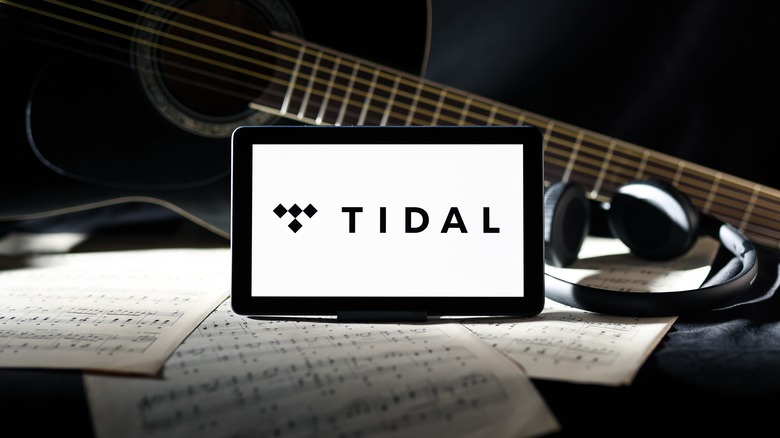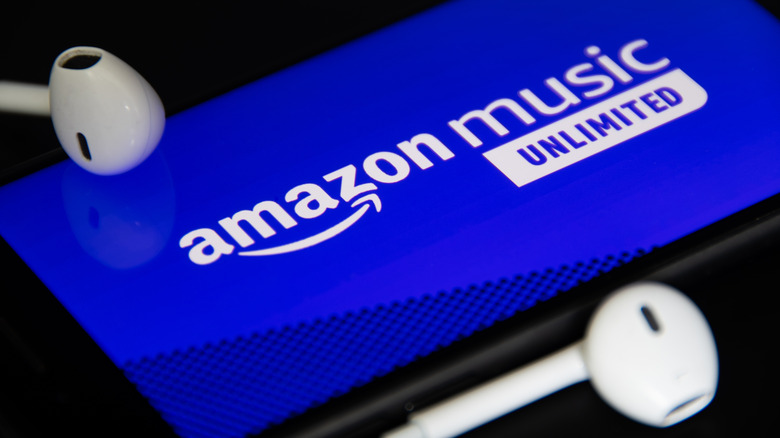What Is Dolby Atmos Music And Which Streaming Services Support It?
If you've been paying attention to the latest and greatest in headphones, speakers, and home theater systems, then one term you've probably been hearing with more regularly is "spatial audio." This refers to music mixed using newer surround sound formats, most commonly Dolby Atmos. For fans of music in surround sound, it's a major win. Occasional Blu-Ray releases aside, multichannel music more broadly had largely been dormant since DVD Audio died off in the late 2000s.
The rival SACD format managed to cling on primarily as a medium for delivering high-resolution stereo music. Not only are new albums and previously stereo-only classic albums getting remixed in the format, but some of the greatest surround sound albums ever produced have been remixed for Atmos; like Pink Floyd's "Dark Side of the Moon," Rush's "Moving Pictures," and the Talking Heads' entire catalog — generally by the same production team that did the older 5.1 surround versions.
As of this writing, there are three different streaming services that offer Dolby Atmos music. For most traditional stereo music, every service's catalogs are pretty close to each other, so when you're selecting your preferred streaming service, it usually comes down to features like lossless, high resolution tracks and widespread device support. If focusing on Atmos music, this gets a little trickier, as there are some odd differences in the catalogs, and the device support can be a bit confusing. Let's take a look at who's in the mix and how they vary.
Apple Music
Of the Atmos music streaming services, Apple Music ($10.99 per month) is probably the most prominent. Apple has arguably been pushing the format the hardest, like with the release of the Apple AirPods Max headphones and their emphasis on spatial audio with head tracking. Case in point: Ben Dodson's Spatial Audio Database and Spatial Audio Finder websites — the best resources on the open internet for finding spatial music titles — deals exclusively with Apple Music.
Apple Music comes up short in two areas, though: Difficulty discovering Atmos content — hence the need for Dodson's websites — and generally not supporting Dolby Atmos playback on non-Apple hardware. There's only one exception: The Sonos Era series will play Apple's Atmos tracks, but Apple and Dolby aren't the most transparent about this, just Sonos. Over HDMI, only the Apple TV's Apple Music app supports Atmos playback, so if you don't already have Apple TV, this becomes a pain point. Are you willing to pay $129-$149 just for a box that can play Dolby Atmos tracks over a specific service?
If you're intent on consuming Atmos music through an Apple device, then Apple Music the obvious pick that will likely have priority on the best titles. To that latter point, Rush's "Moving Pictures" is missing two Atmos-mixed tracks on the two rival services for no apparent reason, despite having the spatial versions of the other five songs, so Apple comes out on top there. But if you're less in the Apple ecosystem? Read on.
Tidal
Next is Tidal ($12.99 per month): Before we even get into the merits of its Atmos support, we should note that if the hi-res catalog is of interest to you, then Tidal is arguably the best choice — it has the widest device support. Tidal's API, for example, allows access in apps like USB Audio Player Pro (required to properly play hi-res audio on Android devices), and it's included in the Denon HEOS ecosystem that serves as that company's hi-res alternative to Sonos.
Tidal's Atmos implementation is flawed, though. It's better than Apple Music in that you don't have to choose to default to the Atmos version of a track/album when available, and it supports a lot more devices including Google TV/Android TV boxes and TVs. However, the app design and discovery features can be odd: While the Google TV app works perfectly, Chromecasting from the mobile app doesn't support Atmos.
And discovery? It's a mess. Like Apple Music, there's no Atmos search, plus Atmos titles are often left off artist pages, and many Atmos mixes don't have "Atmos mix" in the title. The main way to find compatible titles is branching out from digging around in curated Atmos playlists. It's also missing a particularly notable Atmos mix in Pink Floyd's "Dark Side of the Moon" despite having the stereo version. With its wide device support and commitment to both hi-res and spatial audio, Tidal should be the easy pick. But it has enough flaws to give us some pause.
Amazon Music Unlimited
Rounding out the list is Amazon Music Unlimited ($10.99 per month, or $9.99 per month/$99.99 per year for Amazon Prime members), the streaming service offered up by "The Everything Store." It matches Apple Music and Tidal when it comes to offering lossless and hi-res options, and its device support is closer to Tidal's ubiquity — both for Atmos, and in general — than Apple's approach, while including the Sonos Era series.
There are quirks, though: When it comes to Google TV vs. Chromecast, for example, it has the opposite problem of Tidal. Atmos works under Chromecast, but isn't being supported by the Google TV app, even when opening up a curated Atmos playlist in the latter. However, Amazon Music Unlimited has a major point in its favor: It's by far the best of the three Atmos music streamers when it comes to helping you find the Atmos titles in its catalog.
It's a little counter-intuitive in that the search modifier menu isn't available in the instant search results on the mobile app; you have to "submit" the search. Once you're used to that, though, it's by far the easiest streaming service for actually finding Atmos music, and that kind of ease of use goes a long way. Amazon passes the "Dark Side of the Moon" test that Tidal failed, as well. If finding and playing Atmos music is far and away your main factor in selecting a streaming service, then there's a strong argument that Amazon should be your top choice.



